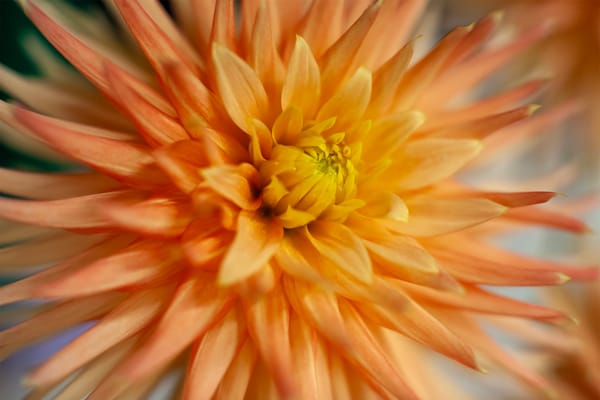Unlock the secrets to abundant, long-lasting dahlias by understanding the life beneath the soil. From selecting healthy stock to debunking overwintering myths, this guide offers a practical look at managing dahlia tubers for resilience, longevity, and flowering success.
Selecting & Buying Dahlia Tubers
What to Look For:
- Firmness: Choose tubers that feel plump and solid—never soft, shriveled, or with broken necks.
- Visible Eyes: Look for a clear growth point at the tuber neck. No eye, no shoot.
- Right Size: Bigger isn’t always better. A firm cluster of small tubers often outperforms one oversized, woody lump.
- Named Varieties: Buy from reputable suppliers offering virus-tested stock for stronger performance and disease resistance.
Buying Tips:
- Pre-order in winter for the best choice, especially for rare varieties.
- Check tubers on arrival—store cool and dry if planting is delayed.
- Choose varieties suited to your climate, especially if you garden in wind-exposed or damp conditions.
Dividing & Rejuvenating Tubers
Why Divide?
- Prevents overcrowding
- Improves airflow and nutrient access
- Revives declining clumps for renewed vigour
How & When to Divide
- Best Time: Late winter or early spring, as eyes swell.
- Method:
- Use a sharp, clean knife to split tubers, ensuring each has an eye and crown section.
- Remove any dead, shriveled, or rotting parts.
- Dust cuts with sulfur or cinnamon before planting or potting on.
Tip: Even worn-out clumps can bounce back after a good division and fresh compost. Always clean off old soil and remove last year’s stems before storage or splitting.
The Lifting Debate: Must You Always Lift Dahlias?
A common myth says lifting is essential—but is it?
The Truth:
- Yes, if you garden on heavy clay, in frost pockets, or poorly drained soils.
- No, in mild climates with well-drained soil and protective mulching—common across Cornwall’s milder pockets.
When You Should Lift:
- On waterlogged or clay soils
- In frost-prone, exposed sites
- For rare, valuable, or show dahlias
When You Can Leave Them In:
- In well-drained, sheltered spots with deep planting and thick mulch
- Where winters are mild and frosts light
Overwintering Options
If Lifting:
- Cut stems back after first frost
- Carefully dig up tubers, keeping roots intact
- Dry upside down for several days in a cool, dry place
- Store in trays of dry peat, wood shavings, or vermiculite at 4–10°C
- Check monthly—remove any rot, mist lightly if shriveling
If Leaving In:
- Cut back after frost
- Cover with 15–20 cm of dry mulch (straw, bark, bracken)
- Add a plastic sheet or cloche in very wet winters
Mulching & Storage Myths
- Myth: Mulching guarantees tuber survival.
- Reality: It helps in mild, well-drained sites but won’t save tubers in saturated ground.
- Myth: Peat is essential for storage.
- Reality: Any dry, breathable medium works—avoid plastic bags.
- Myth: Tubers must be scrubbed clean before storage.
- Reality: Light soil remnants can help balance moisture and protect the skin.
Real-Life FAQs
| Question | Evidence-Based Answer |
|---|
| Can I leave dahlias in over winter? | Yes, with good drainage and mulch in mild areas. Lift in cold, wet, or heavy soils. |
| Must I divide every year? | No—but dividing every 2–3 years improves health and flowering. |
| How do I prevent shriveling in storage? | Use a slightly moist medium, store cool, and check monthly. |
| Will mulching alone prevent rot? | Only on light, free-draining soils—raised beds help. |
Best Practices for Long-Term Tuber Health
- Rotate dahlia beds every few years to avoid pest build-up
- Always start with clean, disease-free tubers
- Refresh soil or compost annually, especially in pots
- Monitor stored tubers monthly during winter
In Conclusion
A healthy tuber is the heart of a thriving dahlia. With thoughtful buying, regular rejuvenation, and an honest understanding of when (and when not) to lift, you’ll build a strong, lasting dahlia stock that rewards you year after year—whether basking in a Cornish border or blooming in pots by the coast.











